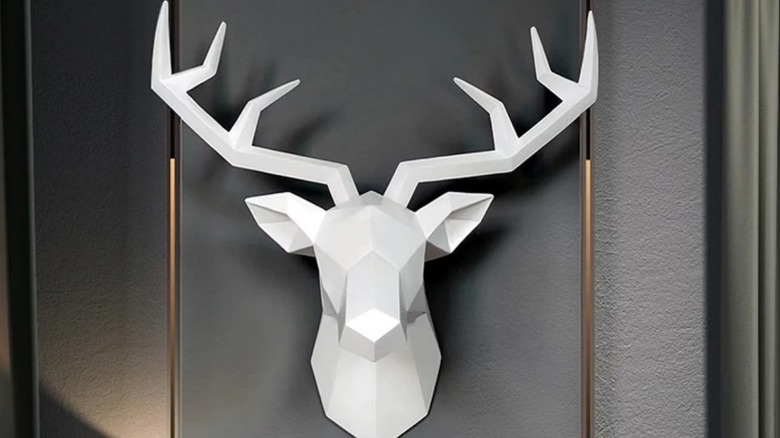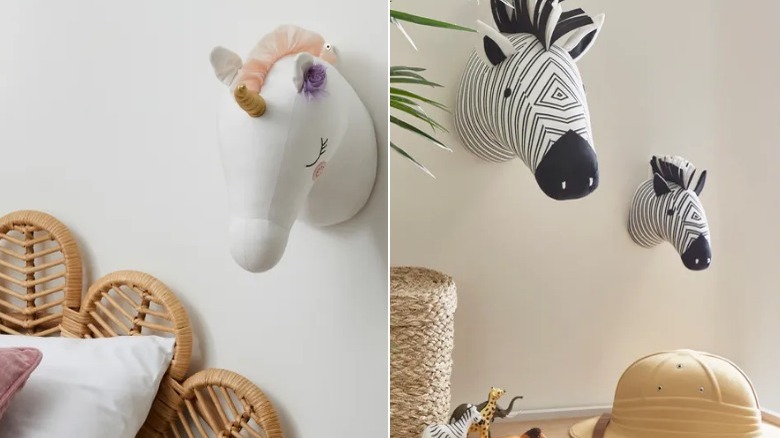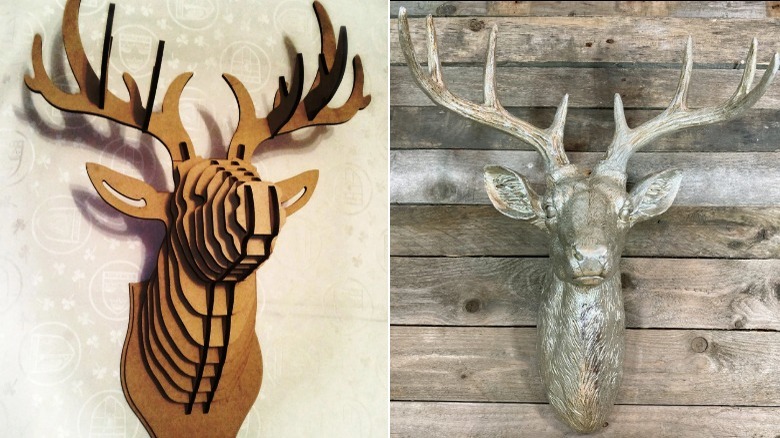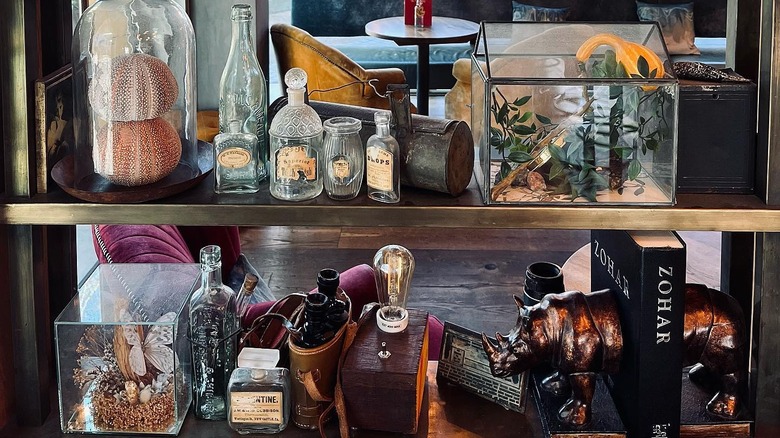The Faux Taxidermy Trend: What It Is And How To Try It In Your Home
While the taxidermized deer and bear heads of yore may have put you off your lunch, that doesn't have to be the case anymore. Thanks to an up-and-coming trend known as faux taxidermy, you can have all the visual interest of taxidermy without having to head into the woods armed with a knife. Faux taxidermy refers to animal busts that are made from, well, not animals, and that aren't trying to look like the real deal. There is a wide range of styles and materials used — origami wood blocks, sculpted foam, or even plush knitted options are available. And you can let your imagination run wild! Unicorns and Jackalopes are just as suited to this trend as lions, tigers, and bears.
Why opt for faux taxidermy if the real stuff freaks you out? The design juxtaposition of a teddy bear bust, compared to the sneering hunted animal heads you grew up seeing, is just meant to be a playful nod that doesn't take itself too seriously. Moreover, gallery walls benefit from the 3-D element as it stands out from framed photos and artwork. Best of all — no animals were harmed in their creation.
Make it kid-friendly
These furry friends will look right at home with your little one's stuffed animal collection. Whether you've got a jungle safari-themed nursery, a dinosaur-obsessed toddler (hello, Triceratops bust), or a wee one going through a major unicorn phase, faux taxidermy can be used seamlessly in children's bedrooms or play areas. If you want to use this trend for a child's space, opt for more plush, cuddly designs. Felted wool, fuzzy furs, and cartoon-like expressions are best for kiddos.
Because you likely don't want your child to associate this quirky décor with any carnage, don't post the stuffed busts on mounts or with frames around them. That takes the piece into the realm of a hunting trophy, which can make the faux taxidermy feel a bit scary rather than fun and cute. Instead, think of them as wall-hung plushies that add softness and cuteness to the space.
Create a faux hunting gallery wall
Love the look of big buck hunting but not so much the big buck hunting itself? You can still pay homage to the ultra-masculine dens that proudly displayed hunting trophies with faux taxidermy. By using multiple busts and animal types, you can create a super playful and visually striking display wall. You can pull this look off in a few ways. Either order multiple faux animal busts from the same maker or in a similar design for a totally cohesive look, or play with many styles if you like to keep it eclectic — metallic spray-painted stag heads mixed with tree branch antlers, and maybe a foam sculpted elephant head for good measure.
To keep the wall broken up distinctly, use additional mounts, mattes, and frames to help each bust pop. This is another nod to the authentic art of taxidermy, which usually includes a wooden mount, but also adds texture and dimension to your wall display.
Take inspiration from cabinets of curiosity
Cabinets of curiosities are a centuries-old tradition of collecting and displaying, for lack of a more specific term, curious things. Sea shells and fossils, dried-pressed butterflies and preserved scarabs, antiquities and apothecary bottles, and of course, plenty of taxidermies, were all standard items in a cabinet. That's because until very recently, museums didn't exist as the massive institutions that we know today. Collectors could charter excursions, or buy up inventory after a ship had sailed home. In the 16th and 17th centuries, wealthy collectors started displaying their wares in dedicated rooms in their homes, known as cabinets of curiosities.
These cabinets don't have to take up entire rooms — a dedicated wardrobe or even a set of shelves would work wonderfully. Build a collection up of whatever objects stoke your curiosity, and integrate faux taxidermy amongst them for a silly but sophisticated nod to these displays. Cabinets of curiosities relied on exotic creatures not found close to home, so consider using fake animals that you wouldn't find in your own backyard.



